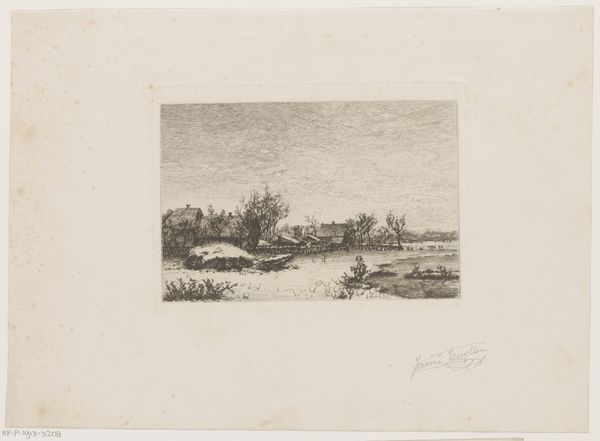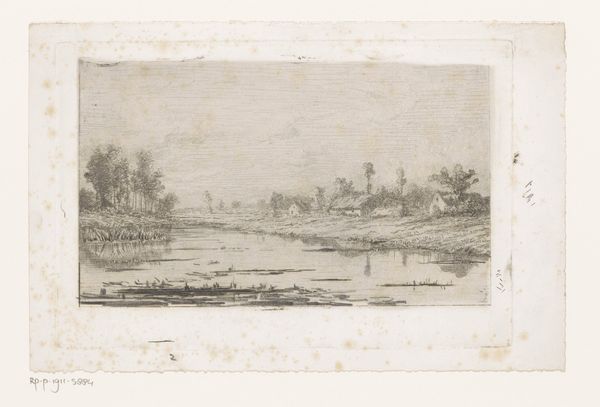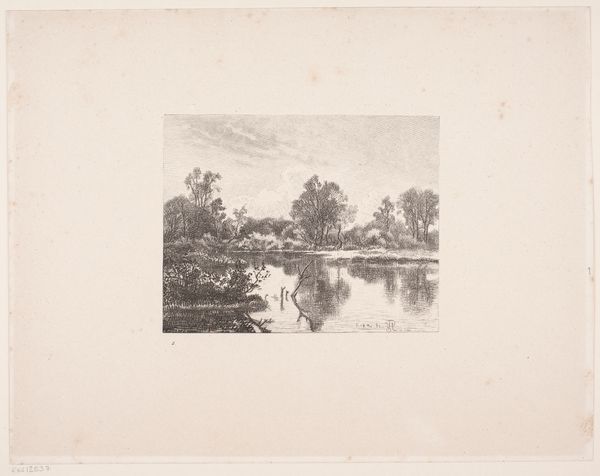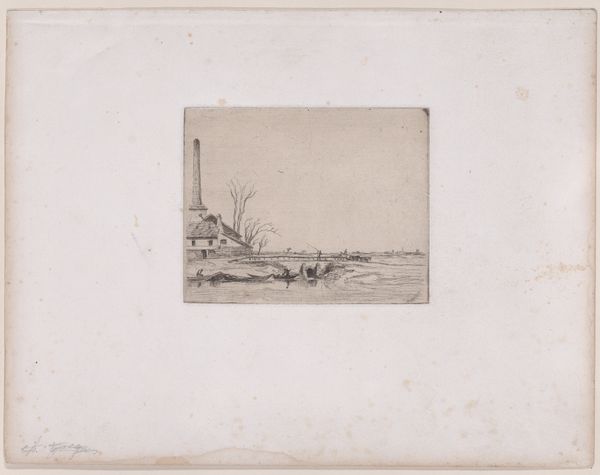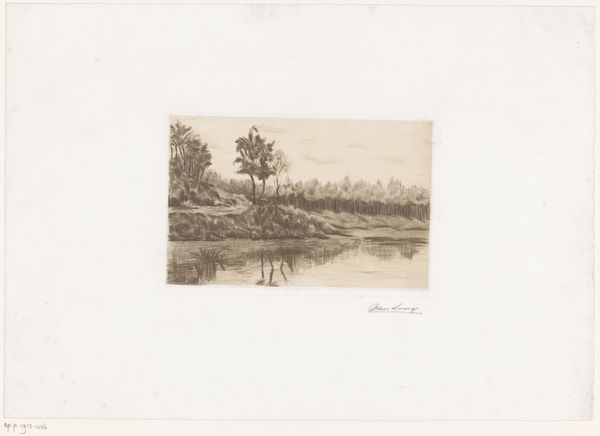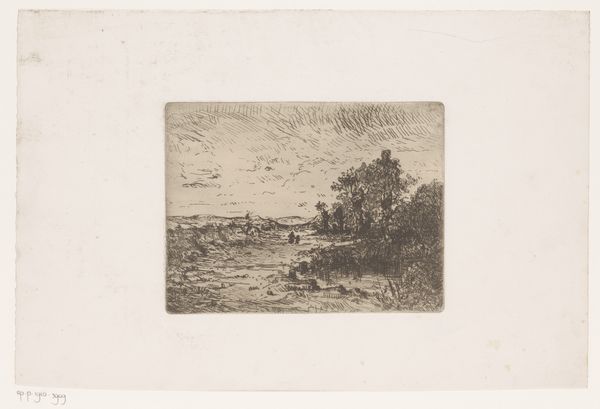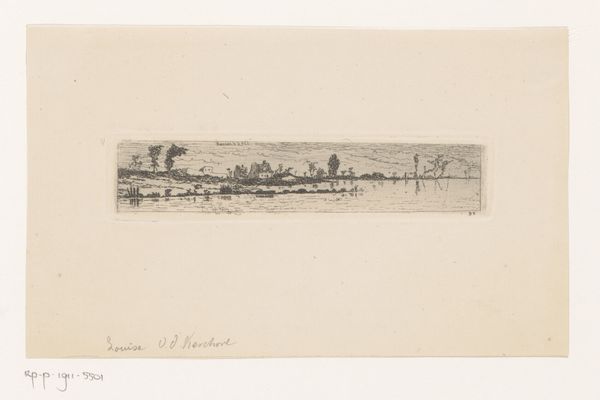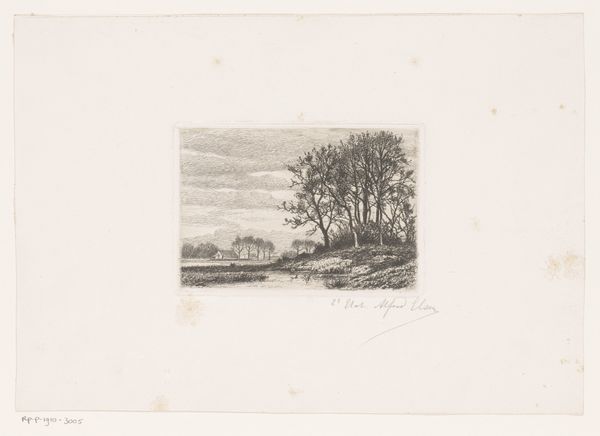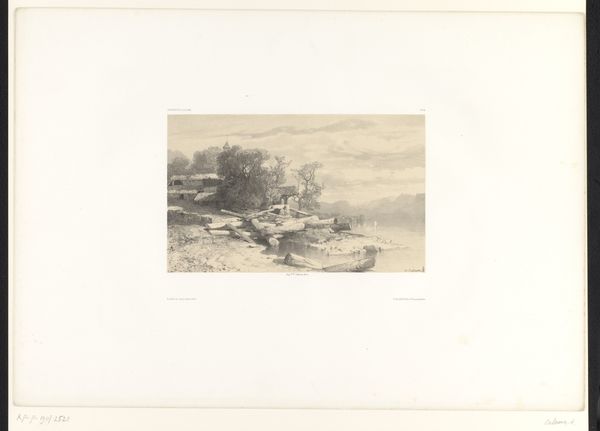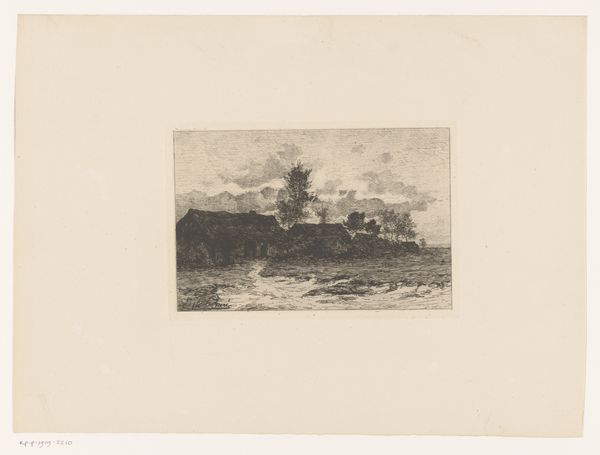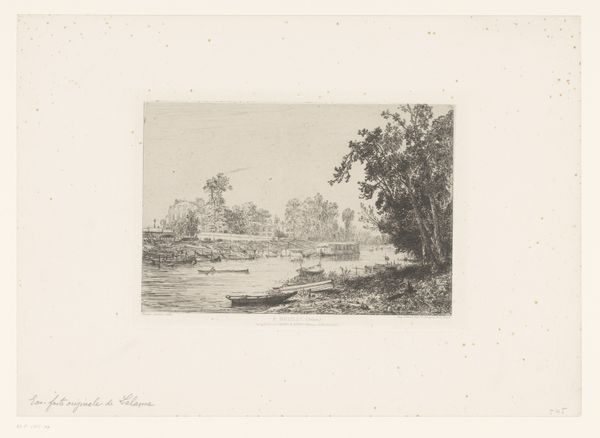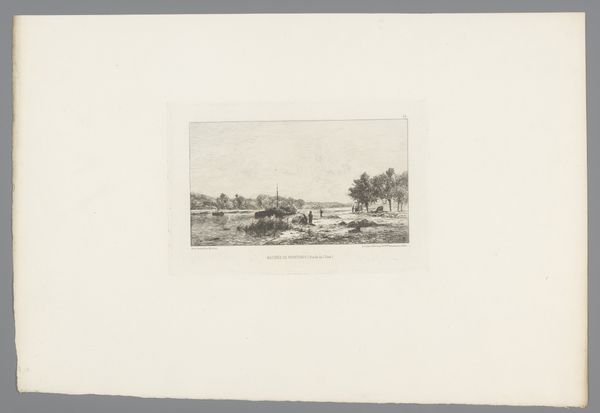
drawing, print, etching, paper, ink
#
drawing
#
ink paper printed
# print
#
etching
#
landscape
#
river
#
paper
#
ink
#
realism
Dimensions: height 159 mm, width 236 mm
Copyright: Rijks Museum: Open Domain
Editor: So, this is "River Landscape with Some Buildings" by Adrien Le Mayeur de Merprés, and it was created sometime between 1854 and 1911. It's an etching, which gives it a kind of delicate, almost dreamy quality. What historical context can you bring to this seemingly quiet scene? Curator: This etching invites us to consider the rise of Realism in the 19th century and its connection to evolving social perceptions. Artists were increasingly focused on portraying everyday life and ordinary people, partly as a response to the Industrial Revolution's impact on society and landscapes. Do you think the artist aimed to present an idealized version of rural life, or something more authentic? Editor: I'd lean towards something authentic. There's nothing particularly grand about it; it's just a very ordinary, quiet moment by the river. Curator: Precisely. And it’s the *ordinariness* that becomes powerful. By focusing on scenes like this, artists contributed to a democratization of art. It challenged the dominance of historical or mythological subjects, implying that the life of a commoner, the sight of a modest river, was worthy of artistic representation and attention. How do you think the availability of prints like these might have further influenced this democratization? Editor: Well, prints would have been more accessible and affordable than original paintings, meaning more people could own and experience art depicting these everyday scenes. It's like art becoming less of a privilege and more of a common experience. Curator: Exactly! The production and distribution of prints allowed these realistic images to circulate widely, shaping public perceptions and even contributing to a sense of national identity centered around shared, common landscapes. It's a quiet scene, but its significance ripples out when you consider the broader socio-political landscape. Editor: That's fascinating. I hadn't considered the political implications of landscape art before, but it makes complete sense now. Thanks for pointing that out. Curator: My pleasure! Art provides unique insight on public perception and politics of its time.
Comments
No comments
Be the first to comment and join the conversation on the ultimate creative platform.
